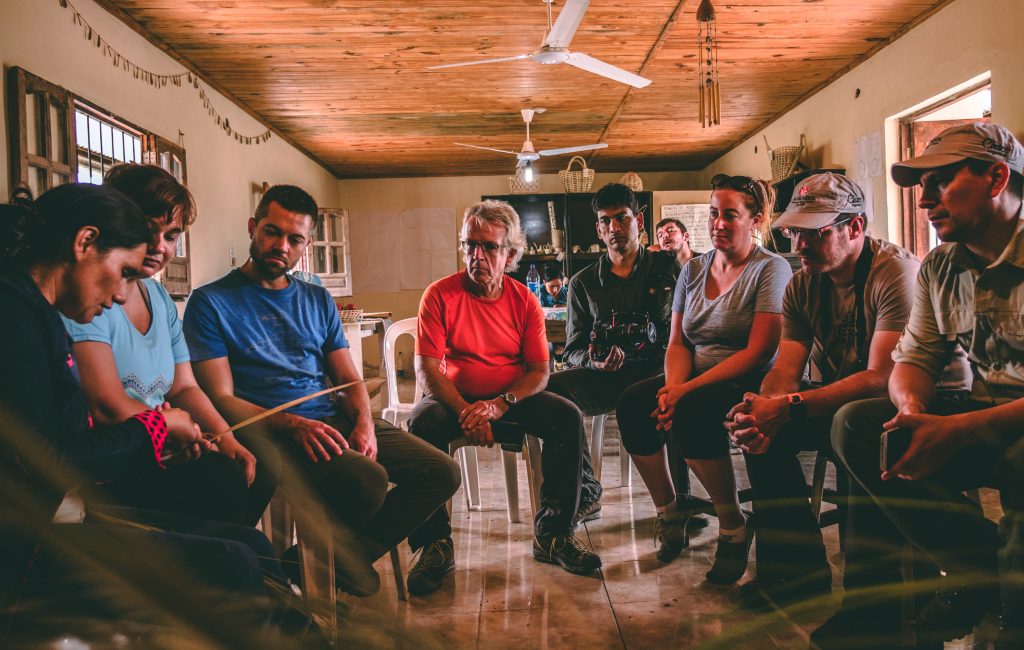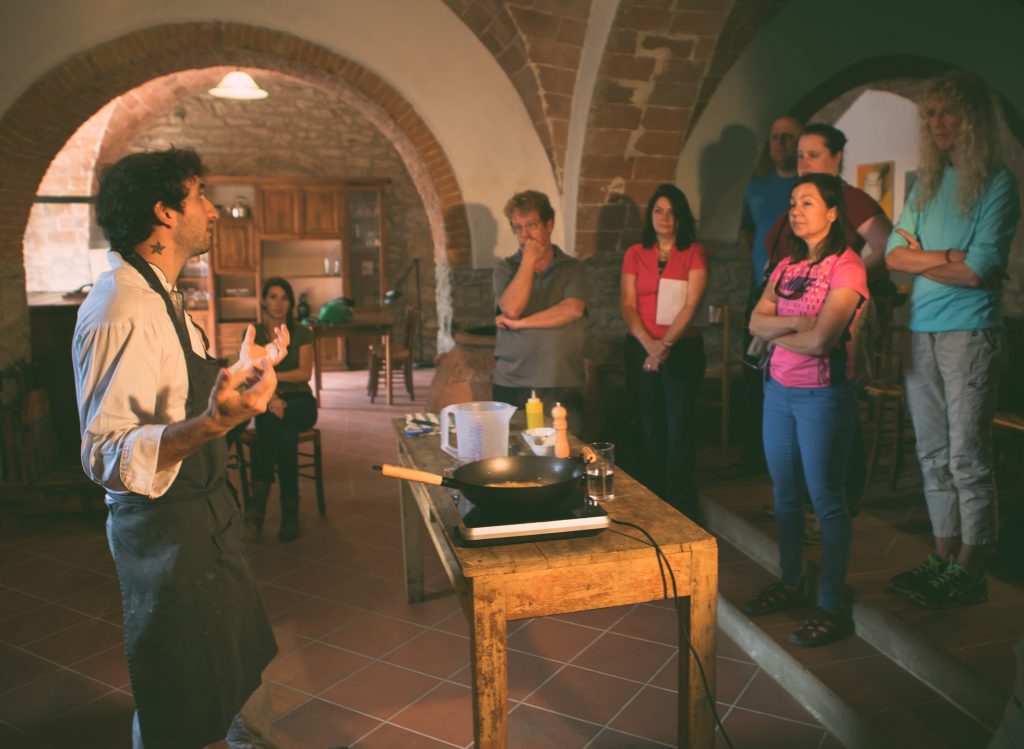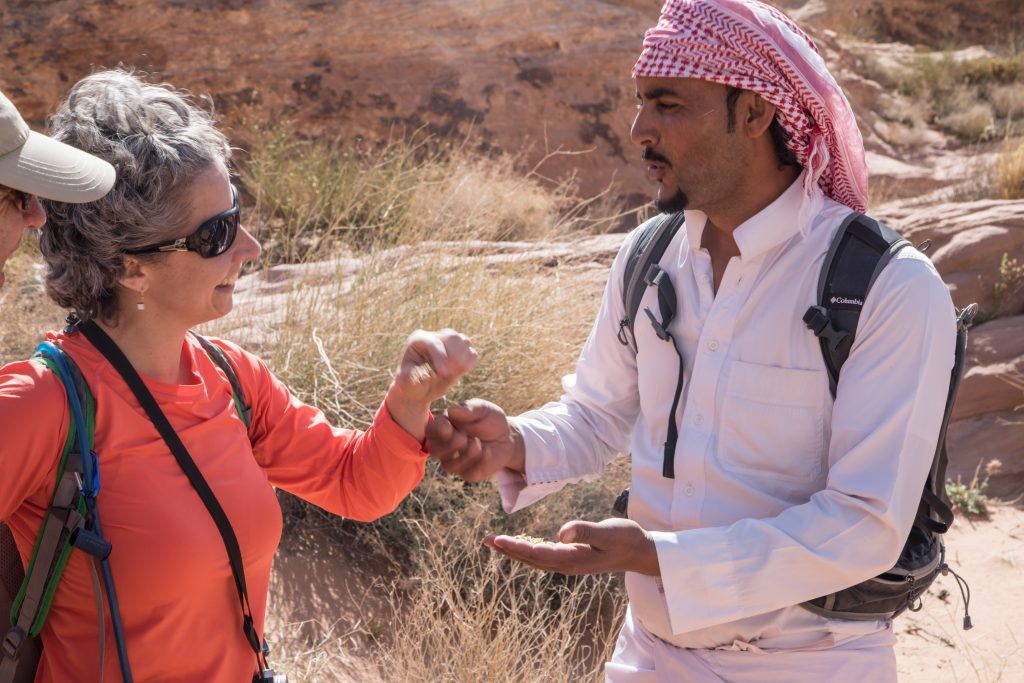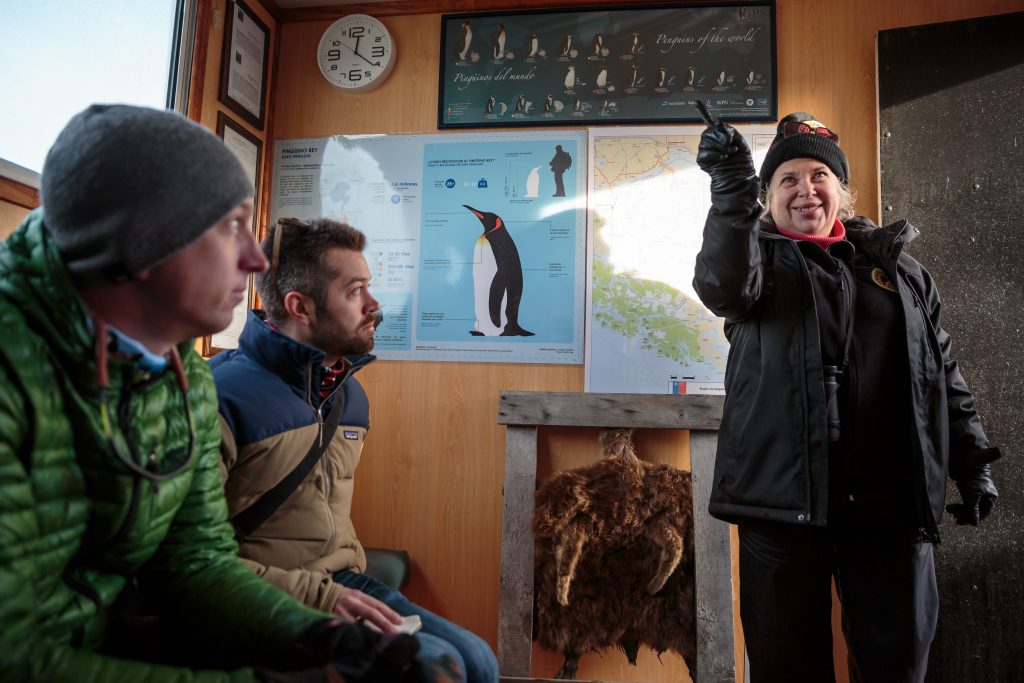Research has shown today’s adventure travelers are more interested in broadening their worldview and learning about different cultures than seeking out risky activities or undertaking “extreme” activities. Seeking out meaningful experiences naturally intersects with a desire to meet and interact with locals living in the places travelers visit. But it’s not enough to simply be in the presence of a new culture; travelers are increasingly eager to understand, interact with, and participate in it.

This growing interest in “authentic” experiences sounds good in theory: After all, it is better to learn about and respect a local community than it is to build a zip line or 4x4 trail through a rural town with little or no regard to the people who live there. However, incorporating community tourism initiatives into adventure travel offerings means more than simply marching visitors past the local people who live in a destination. From tribal communities across Africa to mountain villages in South America or indigenous neighborhoods in the Arctic regions, there are common practices industry professionals should recognize and adhere to in order to ensure their good intentions are actually best practices.
Several industry professionals offered their insights on the topic during the Community Tourism Partnerships: Evolution of Adventure Product and Marketing session at the 2017 Adventure Travel World Summit.
Early Contact
The people who live in communities that pique travelers' interest aren't traditionally travelers themselves. “We have to keep the history of colonization and imperialism in mind because there is a certain imbalance between the traveler or visitor versus local community members who, more often than not, will never be tourists themselves,” said Ana Ines Figueroa, owner and founder of Adventure & Landscape and a panelist during the Summit session.
Adventure tourism can positively benefit local communities through job creation and economic stimulation while also preserving the natural landscape people want to visit. Having a financial reason to care for the environment and preserve local traditions is a powerful incentive, but such initiatives should be natural and community-driven instead of turning them into a display of exploitation.
Check out the following webinars for more information about appropriate and sustainable community tourism practices:
To do this right, community members must be involved at every step of the process — from initial brainstorming ideas on how to integrate tourism into the natural rhythm of a destination and infrastructure planning to risk management and setting expectations about what is and isn’t appropriate for visitors. “When you talk about developing indigenous tourism or community-based tourism — or tourism where indigenous people live — you need to contact the community at an early stage. This is really, really important,” said Lennart Pittja, who grew up in a reindeer-herding family in the Unna Tjerusj Sami community in Gällivare, Sweden. One of the session’s panelists, Pittja is the CEO and founder of Sápmi Nature.
Avoiding Stereotypes and Simplification
When people conjure up images of “authentic” travel experiences that involve local communities, they often picture people in traditional clothing and settings: Maasai men wearing red shukas holding spears in their hands. Indian women with nose rings in brilliantly colored saris. Natives of the South Pacific in grass skirts.

In marketing materials, travel companies set expectations for what visitors are going to experience. These companies have a responsibility for honestly thinking about what they promote through these materials, which may include stereotyped images. “When we are selling indigenous experiences and local communities, what are we selling? What is a traveler buying?” Figueroa asked. Using images like those noted above, travel companies set consumer expectations, thus perpetuating stereotypes that oversimplify and exploit traditions locals don’t necessarily want to make available for outsiders’ consumption.
“I think we can do better within our adventure travel community than using stereotyped words and images, over and over again,” Pittja said. Local people should make the decision about what they want to wear, and what and how they want to share their traditions with outsiders. Pittja, for example, will show people his traditional clothing but he does not wear it simply because it “adds” to a community tourism experience. “They’re special, so I wear them for special occasions,” he said. “I wear them for a wedding or a funeral or maybe even a Sami party at the winter festival in Jokkmokk in February every year, but it’s my right to decide what to wear.”
Travel companies need to consider if and how their marketing messages align with what is actually being offered on their trips. “We talk about meeting people. ‘Meeting’ means getting to know each other, like asking someone’s name and having a conversation, and eventually having a photograph, but not necessarily,” Figueroa said. “‘Meeting’ is not the same as ‘having brief contact with,’ and many times the only thing travelers have is a brief contact to take a picture of or with a local to show other people.”
“I think we can do better at creating the transformative experiences we all look for than to dress people up in traditional clothes just to be able to post a picture on our social media and collect likes,” Pittja said. Yet, the way many travel itineraries are designed has resulted in this kind of “authentic” experience, which can actually negatively impact the same local communities travelers might believe they are helping by visiting. In some places, for example, kids aren’t sent to school so they can be made available to have their photos taken by travelers, which results in an immediate financial incentive for families that need to put food on the table but has long-term negative effects for educating a population. In other places, cheap versions of sacred items are hawked to travelers, exploiting a culture that has developed its traditions over the course of several generations.
“We have to be aware of the images we use and the expectations we create. Be mindful of the images you use because your customers will want to do the same thing,” Figueroa said. If the tourism product is about looking at people instead of knowledge that local people have to share or teach to visitors, it will not be sustainable. “We need to educate our clients, and we need to educate ourselves as well,” she added.
A Mutually Beneficial Relationship
It is absolutely essential that whatever community-based experiences are built into a tour itinerary are beneficial for everyone involved. If they are not, the venture will not be sustainable. “We can not only talk about the customer experience. We have to talk about everyone’s experience. We have to listen to both sides of the table, come to an agreement, and work together,” Figueroa said.

“My indigenous Sami community as well as my brothers and sisters from around the world — almost 400 million people — have a deep knowledge, respect, and understanding for the environment where we live. We have lived here for a long, long time without destroying the ecosystems. On roughly 20 percent of the landmass on Earth where traditional indigenous people live, we find almost 80 percent of the world’s bio-diversity,” Pittja said. “So, please, don’t come to us and pretend you are the experts.”
Just as the traditional communities who live on the land have the knowledge, respect, and understanding about the places in which they live, Pittja emphasized the importance of fostering partnerships based on mutual trust, respect, and understanding between locals and those who want to offer community-based tourism experiences. “The definition of a partnership is that it is beneficial for all parties,” he said. When it comes to community-based tourism, that includes thinking about how such offerings will benefit not just those currently living in a destination but future generations as well. Furthermore, this requires placing an emphasis on actively protecting the natural environment that plays a fundamental role in indigenous cultures.
In considering all the potential effects of offering community-based tourism experiences, tour companies also need to realize there is no one-size-fits all solution to appropriate community-based product development. Every community and culture is unique and must be considered on a case-by-case basis. Figueroa offered a list of ownership-related questions worthy of visiting during this exploration phase as tour companies work with local communities to find out if there is positive, mutually beneficial fit for both parties:
- Is there consent from the local community for tourism development in the region? Is the project based on respect and listening to real needs?
- Are community members aware of the ways in which their lifestyle could be affected if they become involved in the project?
- Is the community deciding how and if they want to be open to tourism? What do they want to share? How much do they want to earn?
- Who has ownership of the traditions that are a part of the tourism interaction? Who benefits from sharing these traditions?
- Is opening the community to tourism a positive thing for the children? What will participation in this project now look like in 20 years? Does it perpetuate economical domination?
“When you have outside influences, all they want and all they care about, for the most part, is getting the job done. ‘Here’s the check, get the job done, wear the costume,’” Taylor said. Emphasizing the importance of this mutually beneficial relationship, he added, “communities should benefit the way they want to benefit, and it’s very seldom based on financial reasons.”

Throughout this discovery process, tour companies need to realize there may not be a good fit and the correct thing to do is walk away rather than push a product on a community it does not want. “Not everybody that lives in a great place that has a great culture wants to be part of the tourism product,” Figueroa cautioned. “We must be aware of that, and we must respect that.”
Appropriate Product Development
Community-based tourism done well is an educational and beneficial opportunity for all parties involved, but it requires listening, asking questions, and creating the foundation for an appropriate environment in which people around the world can meet and learn from locals and each other. If travelers are eager for authentic experiences, then it is up to travel companies to seriously consider what that means and how these expectations can be met in a responsible manner.
This requires consistent messaging across a tour company. Guides, who are on the ground and acting as a buffer between the local community and its expectations and travelers and their expectations, need to be involved in product development. “This product needs to be consistent with information we get from the field, and the product needs to be consistent with the conversation we’re having with the people living in the areas we’re traveling into and through,” Figueroa said. It must address consumers’ needs and desires while also meeting communities’ sustainability goals.
On the sales and marketing side, communication with customers must convey the right ethical message while creating and managing appropriate expectations. This can be particularly challenging in large companies, but this consistent messaging is essential so that all team members can follow through on the promise of delivering an authentic experience travelers understand, appreciate, and respect that truly is a win-win for everyone involved.
